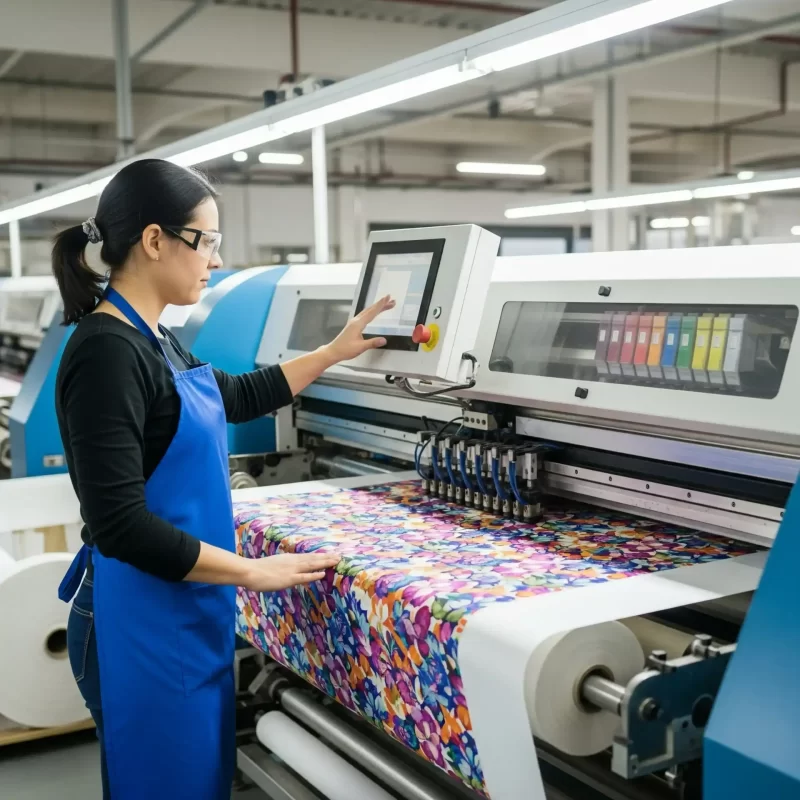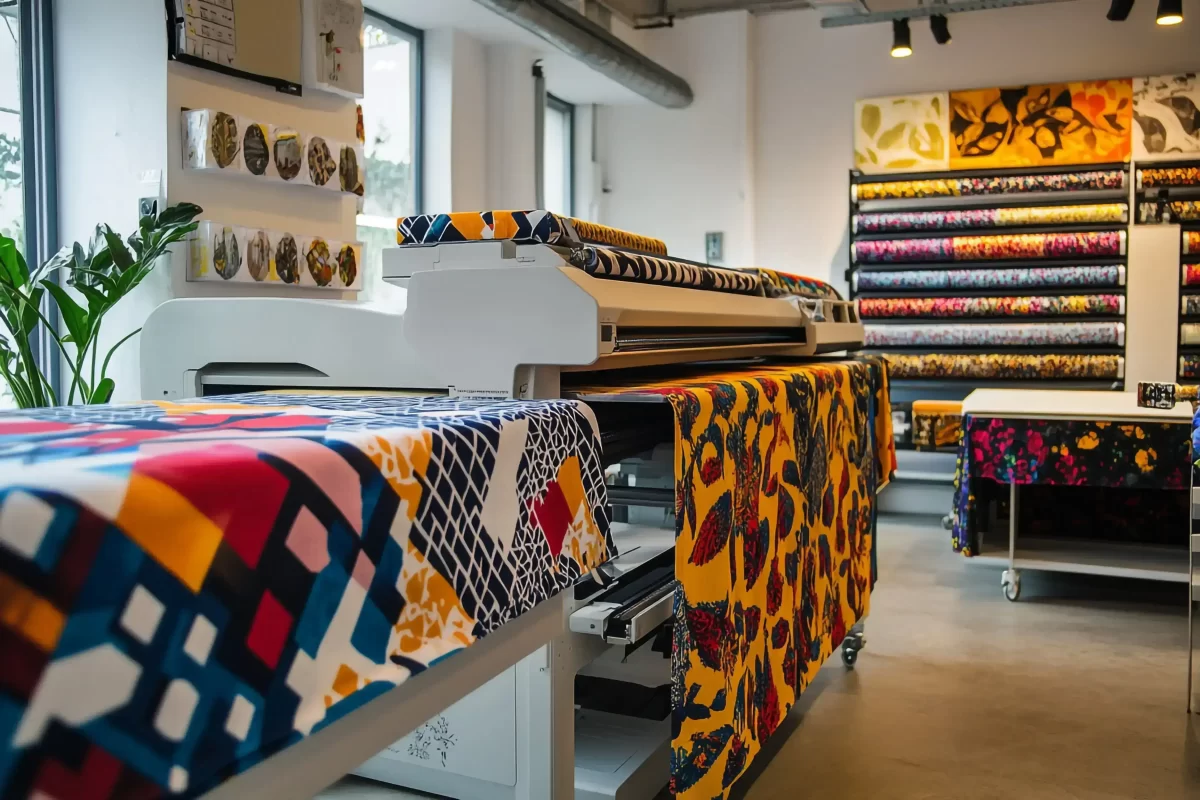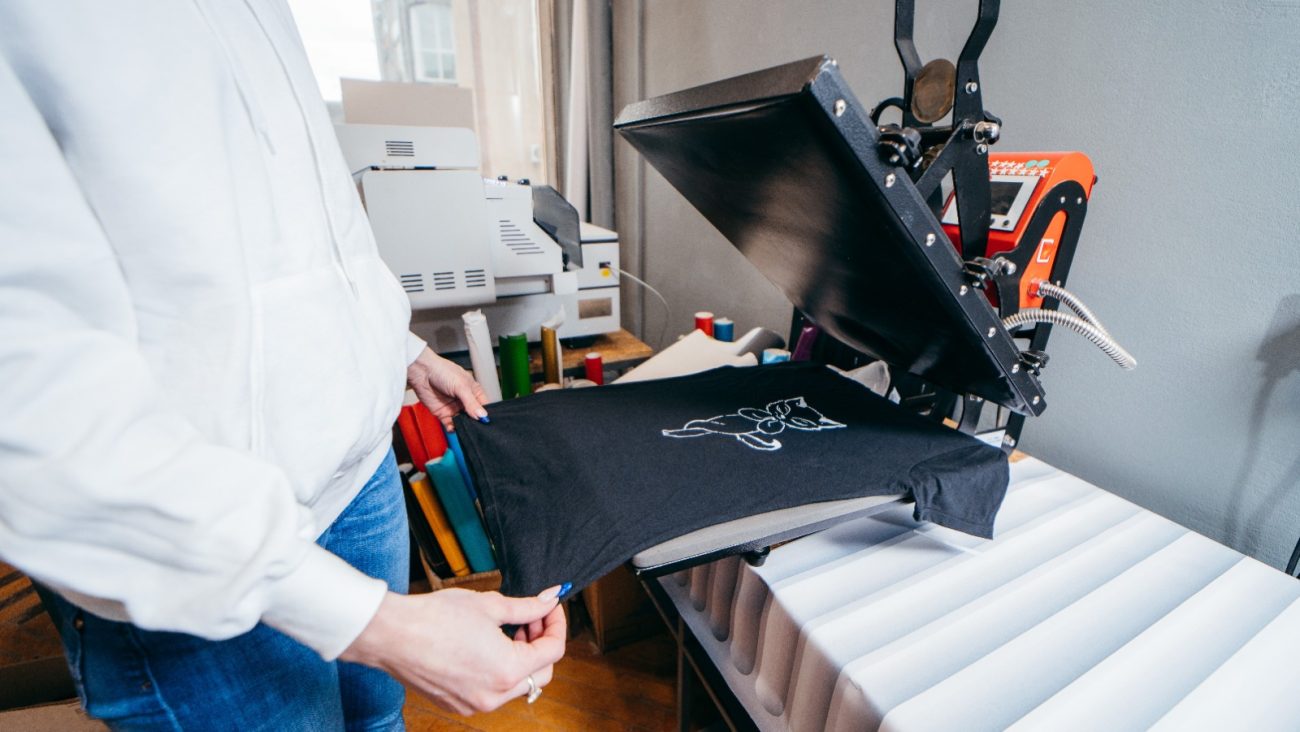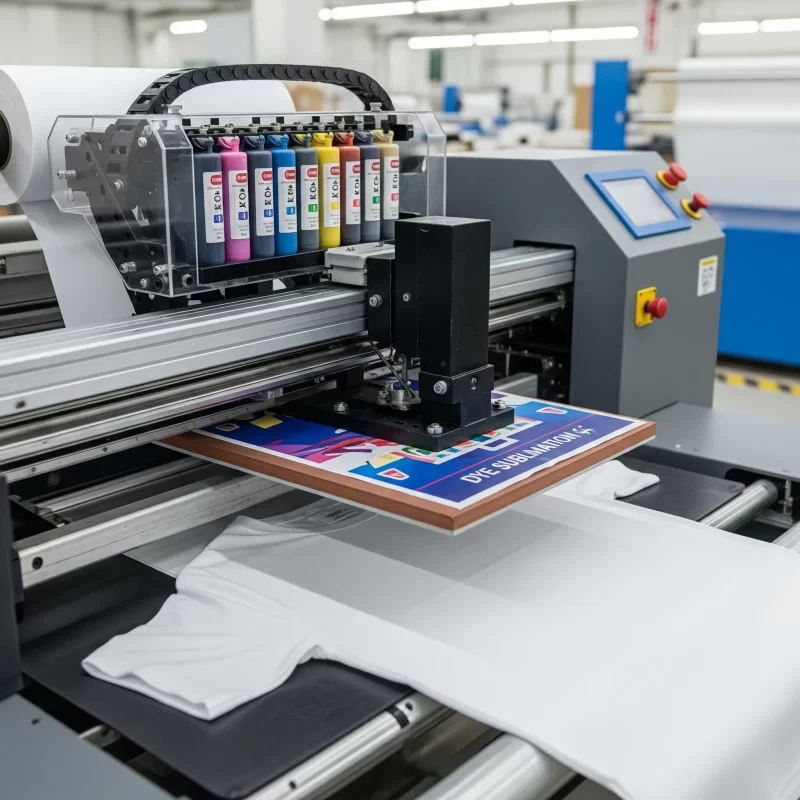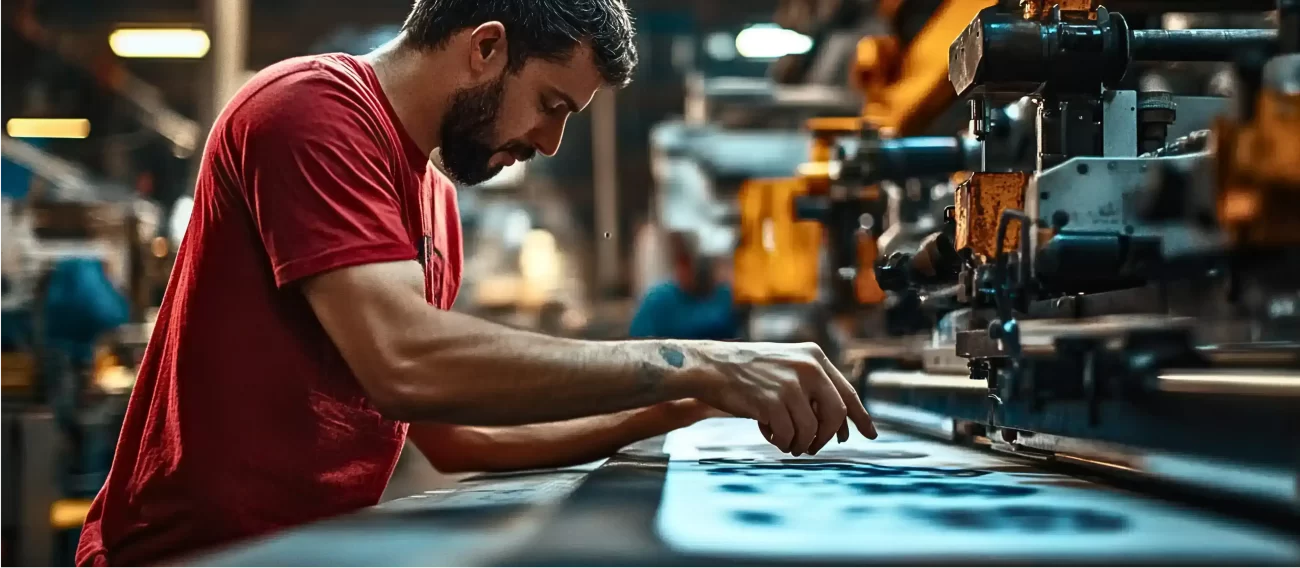Digital Fabric Printing: Your Textile Printing Guide
Welcome to the comprehensive guide on digital fabric printing, a revolutionary technique transforming the textile industry. This guide provides an in-depth look at digital fabric printing, exploring its mechanics, various types, advantages, and future trends. Whether you’re a designer, manufacturer, or simply curious, this guide offers valuable insights into the world of digital textile printing. Remember to request a quotation for our textile printing machinery, ink, and consumables for the best results.
What is Digital Fabric Printing?
Digital fabric printing is an advanced printing technology that uses inkjet printers to transfer designs directly onto fabric. Unlike traditional methods of printing like screen printing, digital printing allows for intricate designs and a wide range of colours without the need for printing plates. It avoids the messy process of forcing ink under the screen and the subsequent need to wash the screens, making it a cleaner process. This method is similar to using a home inkjet printer, but on a larger scale, to print on fabric.
Understanding the Basics of Digital Printing
At its core, digital printing involves depositing tiny droplets of ink onto fabric to create an image. This process leverages digital files sent directly to the printer, eliminating the need for physical screens or stencils. The precision of inkjet technology allows for high-resolution prints with gradients and photographic details that are difficult to achieve with traditional screen printing methods.
History and Evolution of Digital Fabric Printing
The history of digital printing fabric began in the 1990s with early methods relying on transfer paper and dye-sublimation techniques. Over time, the technology has evolved to allow for direct-to-fabric printing, streamlining the printing process and expanding the range of printable materials. This evolution has made digital printing a viable and sustainable alternative to traditional printing methods.
How Digital Fabric Printing Works
Digital textile printing involves a multi-step process. This process can be broken down as follows:
- First, the fabric is prepared with a pre-treatment to ensure proper ink absorption.
- Then, the printer deposits ink onto the fabric after the design is printed from a digital file.
- Finally, the fabric undergoes post-treatment, which may include heating, steaming, or drying, to fix the colour and ensure durability and color fastness.
Different types of ink and methods are used depending on the fabric composition and desired outcome.
Types of Digital Fabric Printing
Digital printing encompasses several methods, each suited to different fabric types and applications. These methods involve:
- Sublimation digital printing
- Direct-to-fabric (DTF) printing
- The use of various inks such as reactive, pigment, acid, and disperse inks
Each method offers unique advantages, making digital printing a versatile solution for the textile industry. Be sure to explore our product catalog for suitable inks and printing machines.
Sublimation Digital Printing
Sublimation digital printing is ideal for synthetic fabrics like polyester and polyester blends, requiring at least 85% polyester in the fabric. This method uses dye-sublimation inks to transfer designs onto transfer paper, which is then heated and pressed onto the fabric. The heat causes the dye to turn into a gas and bond with the fibers, resulting in vibrant, durable prints. Request a quotation to explore polyester printing options.
Direct-to-Fabric (DTF) Printing
Direct-to-Fabric (DTF) printing involves printing designs directly onto the fabric without the use of transfer paper. This printing method is particularly suitable for natural fibers like cotton, viscose, and rayon, as well as nylon materials. While DTF printing may not achieve the same level of sharpness as sublimation, it offers a quicker and more straightforward printing process. DTF excels in printing colorful and intricate designs.
Reactive, Pigment, Acid, and Disperse Inks
Here’s a look at the types of inks commonly used in digital fabric printing. Each is formulated for specific fabrics and uses:
- Reactive inks are ideal for natural materials such as cotton, providing good colour penetration.
- Pigment inks perform well on both natural and synthetic materials.
Understanding the properties of each ink is crucial for achieving optimal printing results, as untreated fabrics can be materials that do not retain color well.
Advantages of Digital Fabric Printing
Flexibility in Design
The flexibility in design is a significant advantage of digital fabric printing, offering virtually limitless possibilities. The digital printing technology supports millions of colours and shades, allowing designers to bring intricate patterns and photographic details to life with great clarity. From simple images to complex artwork, digital printing methods ensure high accuracy in reproducing designs.
High Accuracy and Consistency
High accuracy and consistency are hallmarks of digital printing, ensuring that every print meets exacting standards. Digital printing excels at reproducing intricate patterns, gradients, and photographic details with exceptional clarity. The precise control of ink deposition minimizes bleeding and misprints, resulting in sharp edges and consistent colours across the entire print run.
Environmental Benefits
Environmental benefits are increasingly important, and digital textile printing offers several advantages. Digital printing typically uses water-based inks, which contain fewer hazardous chemicals. Additionally, digital printing reduces waste by printing only the required amount, minimizing excess fabric and ink usage. It’s a more environmentally friendly textile printing solution.
Disadvantages of Digital Fabric Printing
Cost Considerations
Despite its advantages, cost considerations can be a significant factor. The initial investment for digital textile printers is often higher than for traditional screen printing equipment. Also, the specialized inks required can be more expensive. However, these costs can be offset by reduced setup times, lower waste, and the ability to produce small, cost-effective batch runs. Consider requesting a quotation to assess the long-term value.
Pre-Treatment and Post-Treatment Requirements
Pre-treatment and post-treatment requirements add complexity to the digital printing process. Fabrics often need to be pre-treated with specific solutions to ensure proper ink absorption and colour adhesion. After printing, post-treatment processes like heating, steaming, or washing are necessary to fix the colours and enhance durability. These steps can increase production time and costs but are essential for achieving high-quality, long-lasting prints on fabric.
Applications of Digital Fabric Printing
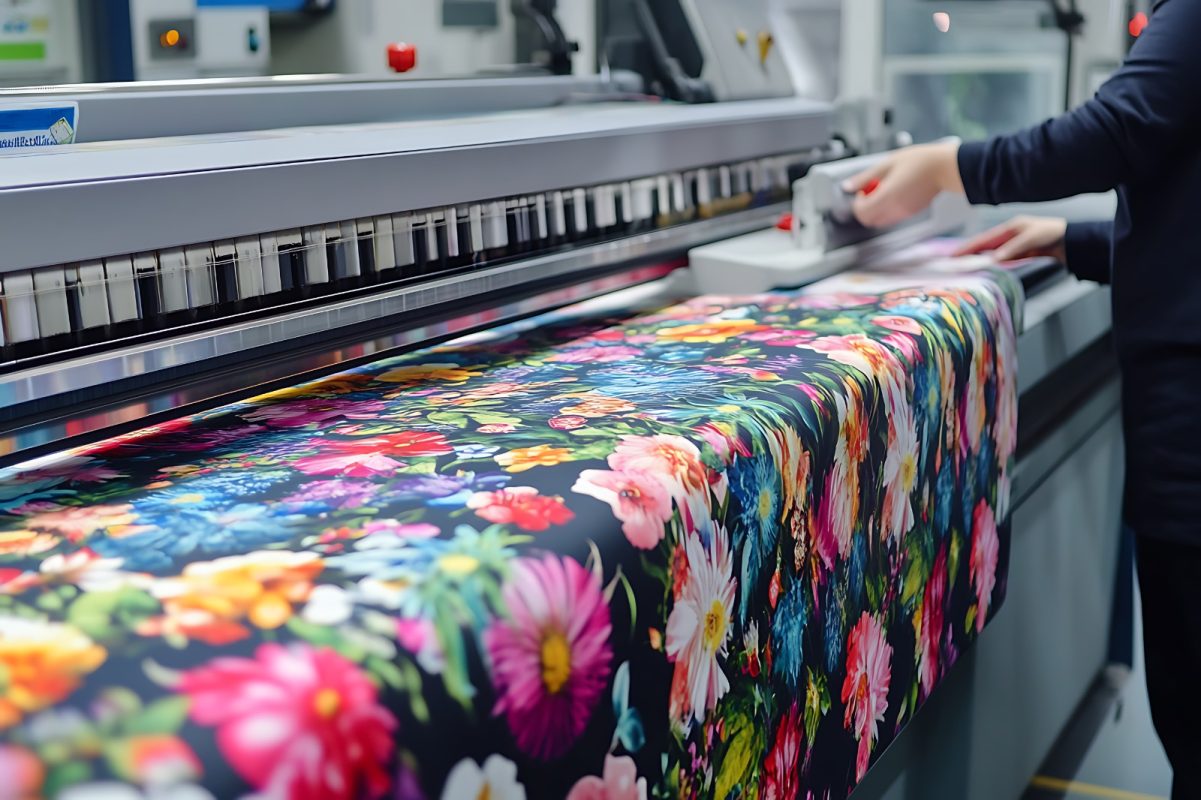
Usage in Fashion and Garment Industries
The fashion and garment industries greatly benefit from the many printing uses of this technology, such as for fast fashion and custom designs. The ability to quickly produce samples allows designers to respond rapidly to trends. Digital printing enables the creation of intricate patterns on clothing that can withstand the extreme conditions of frequent washing.
Home Decor and Interior Design
Digital printing finds extensive applications in home decor and interior design, enabling customized curtains, bedding, and upholstery. It allows for the transfer of photos and artwork onto fabrics with high resolution, catering to individual preferences. Additionally, digital printing facilitates seamless and continuous patterns on wall coverings and soft furnishings.
Custom and Creative Products
Custom and creative products are perfectly suited for digital printing, allowing for the production of personalized items like scarves, bags, and promotional materials. The ability to print small quantities with intricate designs makes it ideal for boutique brands, artists, and businesses seeking unique, customized textile products.
Future Trends in Digital Fabric Printing
As the digital textile landscape evolves, several exciting trends are poised to shape the future of digital fabric printing. From eco-friendly printing technology to smart, AI-driven solutions and innovative 3D effects, these advancements promise to revolutionize how we create and utilize fabric in diverse applications..
Integration of Green Technologies
The integration of green printing technology represents a significant leap toward sustainability in the textile industry. This involves the development and adoption of greener ink derived from biodegradable and harmless materials. Additionally, closed-loop systems for water recycling are gaining traction, minimizing waste and promoting a circular economy.
AI and Smart Printing Solutions
Artificial intelligence (AI) is set to transform digital printing, offering designers enhanced inspiration and accelerating design realization. AI-powered printers can instantly match fabric versions to customer images, streamlining customization. This integration enhances efficiency, precision, and creativity, enabling tailored designs.
3D Effects in Fabric Printing
Combining digital fabric printing with 3D printing opens new avenues for innovation, allowing special ink to add three-dimensional effects to fabric. This fusion of printing technology creates intricate textile structures, enhancing artistic value and functionality. The 3D fabric can adapt to complex designs, infusing new power and unique aesthetics into textile products, marking a significant advancement in the textile industry.
Conclusion
Digital printing is more than just a printing technology; it’s a catalyst for change, driving personalization and sustainability in the textile industry. As technology advances and costs decrease, the applications of digital fabric printing will broaden, establishing it as the future of printing. By embracing digital solutions, the textile industry can unlock new possibilities in design, production, and environmental responsibility.
Summarizing the Importance of Digital Fabric Printing
In summary, digital fabric printing represents a transformative shift in the textile industry. Its ability to support personalized and sustainable development makes it an essential component of modern textile manufacturing. The precision, flexibility, and environmental benefits of digital printing position it as a key driver of innovation and progress.
Encouraging Exploration of Digital Printing Solutions
We encourage you to explore the diverse digital printing solutions available. Whether you’re interested in sublimation, DTF, or other printing methods, understanding the options and their benefits will empower you to make informed decisions. Consider requesting a quotation to explore how digital solutions can enhance your textile production.
Contacting Prominent Tec for Expert Guidance
For expert guidance and tailored solutions in digital fabric printing, contact Prominent Tec. Our team can provide valuable insights and support to help you navigate the world of digital printing. We offer a wide range of printing machines, ink, and consumables to meet your specific needs. Reach out to us today to discover how we can assist you.

